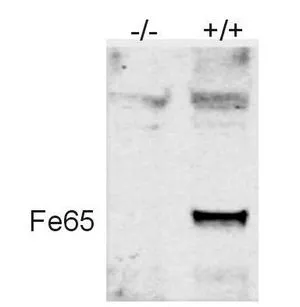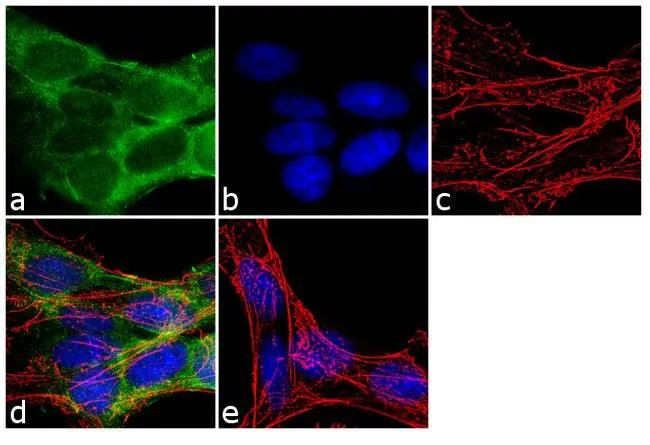
WB analysis of membrane enriched extracts (30 microg lysate) of U-87 MG (Lane 1), SH-SY5Y (Lane 2), NTERA-2 (Lane 3), U-2 OS (Lane 4), A549 (Lane 5), Mouse Brain (Lane 6) and PC-12 (Lane 7) using GTX25668 FE65 antibody. Dilution : 1-2 microg/ml
FE65 antibody
GTX25668
ApplicationsFlow Cytometry, ImmunoFluorescence, Western Blot, ImmunoCytoChemistry
Product group Antibodies
ReactivityHuman, Mouse, Rat
TargetApbb1
Overview
- SupplierGeneTex
- Product NameFE65 antibody - KO/KD Validated
- Delivery Days Customer9
- Antibody SpecificityThis antibody does not detect endogenous levels of Fe65.
- Application Supplier NoteWB: 1-2 microg/ml. ICC/IF: 2 microg/ml. FACS: 3-5 microg/106 cells. *Optimal dilutions/concentrations should be determined by the researcher.Not tested in other applications.
- ApplicationsFlow Cytometry, ImmunoFluorescence, Western Blot, ImmunoCytoChemistry
- CertificationResearch Use Only
- ClonalityPolyclonal
- Concentration1 mg/ml
- ConjugateUnconjugated
- Gene ID11785
- Target nameApbb1
- Target descriptionamyloid beta (A4) precursor protein-binding, family B, member 1
- Target synonymsamyloid-beta A4 precursor protein-binding family B member 1; Fe65; Rir
- HostRabbit
- IsotypeIgG
- Protein IDQ9QXJ1
- Protein NameAmyloid-beta A4 precursor protein-binding family B member 1
- Scientific DescriptionThe major transcript of the Fe65 gene is a neuron-specific mRNA that encodes a nuclear protein whose amino-terminal domain strongly activates the transcription of reporter genes. Fe65 has been implicated in a regulatory and cell signaling mechanism because it contains two different motifs involved in protein binding; a WW domain (a variant of Src homology 3 domains) and a phosphotyrosine interaction domain (PID). Interestingly, the PID domain binds to the same motif present in the conserved cytoplasmic domains of the beta PP and beta PP-like proteins. RNA analyses revealed that Fe65 is predominantly expressed in the brain and in the regions most affected by Alzheimers disease-associated neuropathology.
- ReactivityHuman, Mouse, Rat
- Storage Instruction-20°C or -80°C,2°C to 8°C
- UNSPSC12352203


